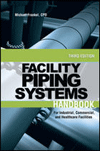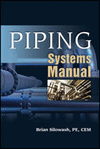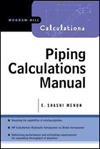Transportation & Freight
Shifting regulations create uncertainty for commercial trucking and freight
Distributors prepare for shifts in diesel prices, equipment, labor costs and more.

Image courtesy of uuoott / Vetta / Getty Images
Transportation and freight are the cornerstone of every supply chain. The commercial trucking and freight industry has had a difficult couple of years, facing a recessionary outlook and declining truck volume, according to the American Trucking Associations 2025. Though the industry is reentering an era of growth and development as we move through 2025, tailwinds including changing regulations, climate changes and technological innovations continue to impact transportation, according to S&P Global 2025.
As the second Donald Trump Administration has taken office, every industry is on alert—as tariff uncertainty creates pressure for shippers, the transportation industry in particular is preparing for shifts in diesel prices, equipment, labor costs and more. Tariffs are impacting air freight as well, as uncertainty remains and consumer confidence is low, which is likely to slow growth for air freight demand, according to Ceva Logistics 2025. Despite slightly slowing demand, capacity is on the rise for air freight. The only potential concern here is oversupply--in that case, carriers may need to adjust, or freight rates could drop.
In addition to tariff uncertainty, the ongoing labor shortage continues to plague the trucking industry. Much of the workforce is aging out, and difficult working conditions combined with high wage demands are making employee retention more difficult than ever before. In late 2024, TCI Transporation unveiled its Trucking Industry Predictions for 2025. TCI found that that labor complications will continue on in 2025, and companies must reframe their focus to compete.
TCI Transportation's report recommended focusing on a sustainable labor pipeline. To create this, companies must focus on workforce training initiatives and hiring diversification. Additional solutions include sign-on bonuses and improving work-life balance to attract more workers. TCI’s report also noted the importance of competitive pay to retain skilled drivers. Companies must balance increasing wage costs with efficiency, though, to stay profitable.
Addressing driver shortages and labor challenges
The ongoing shortage of qualified drivers is a critical issue, caused by an aging driver population combined with fewer younger drivers entering the industry. For HVAC and plumbing distributors, this means delayed deliveries and higher costs for drivers and trucking services. They are often forced to adjust delivery schedules, leading to inefficiencies in inventory management.
A few emerging trends aim to address this. To start, advanced fleet management systems that incorporate telematics are becoming a crucial tool for improving fleet efficiency. By tracking key metrics such as fuel consumption, driver behavior and vehicle performance, distributors can make data-driven decisions to reduce operating costs, improve route planning, enhance vehicle maintenance schedules and -- most important – prioritize safety and security.
Another solution involves outsourcing to third-party logistics providers. This provides access to specialized expertise and more scalable transportation networks, helping distributors better manage driver shortages and fluctuating transportation costs.
Finally, a trend that might emerge moving forward is the adoption of autonomous vehicles and drones. Although still in the early stages, this technology has the potential to revolutionize the supply chain. Autonomous trucks could help address driver shortages and improve efficiency, particularly in long-haul freight. Drones, meanwhile, offer potential solutions for last-mile delivery, especially in urban areas where access is difficult or costly.
As they navigate new options, however, it will be critical for industry leaders to monitor changes in driver regulations and labor laws. Any changes, such as California’s AB5 law regarding independent contractor classifications, could have a direct impact on transportation costs and the availability of drivers. These regulations must be monitored closely, so distributors can adequately adjust staffing and operating models.
Minimizing costs, boosting efficiency
For companies looking to minimize costs on their pipe shipments, Michael Jorgensen, freight and logistics manager for F.W. Webb, recommended negotiating with multiple LTL carriers when choosing a partner for LTL tarrifs, since some way be more willing to reduce overlength charges. He also recommends looking into dynamic pricing. "Carriers will adjust their costs downward on certain days to fill and reroute trucks. Leveraging a transportation management system can simplify the process of bidding LTL loads and help you deliver cost savings."
Jorgensen points out that upgrading a load from LTL to FTL based on lane and load size will vary depending on your negotiated rates, load weight, dimensional weight and region. "In order to get the best costs on an FTL load, you need to have multiple ‘hungry’ freight brokers who will fight for the cost savings," he says. "Providing more time allows them to shop the load more effectively, but building sustainable, mutually beneficial relationships helps deliver the best results."
To combat ongoing tailwinds in the industry, shippers can utilize a Transportation Mangement System (TMS) to improve both supply chain visibility and operational efficiency. "Companies that have adopted TMS platforms for shipping will have a big leg up over companies still using pen and paper," Jorgensen says. "Failure to get up to speed will result in added LTL inspection fees."
Increasing operational efficiency is equally important to cutting logistic costs. Teran Everett, transportation and logistics manager for First Supply, says implementing a TMS can enhance your supply chain visibility and improve operational efficiency.
"This technology will help standardize processes across our network while providing real-time insights into inbound and outbound freight movement," he says. "By integrating multiple transportation modes within a single platform, we can adapt more quickly to disruptions and make data-driven decisions to optimize logistics."
As technology develops, proper skills training is essential for workforce efficiency. According to TCI Transportation, fleets are focusing on programs that prioritize technology, safety compliance and fuel efficiency.
Overcoming increased fuel prices and supply chain inflation
Fuel price volatility continues to be a significant challenge for the industry. The fluctuating cost of fuel directly impacts transportation expenses, while broader supply chain inflation -- from raw materials to freight rates -- is putting upward pressure on operational costs. These increased costs are passed along to consumers, so distributors must carefully manage pricing and forecasting to remain competitive.
Many distributors have responded to this challenge by exploring the use of electric vehicles or hybrid trucks. Although the upfront costs are high, transitioning to cleaner vehicles will help comply with emissions standards while also providing potential long-term savings in fuel costs. Alternative fuels like compressed natural gas are also being considered to reduce carbon footprints and operating expenses.
Another option is to collaborate with other businesses to consolidate shipments. Shared transportation resources -- particularly in less-than-truckload shipping -- can help reduce freight costs, improve delivery speed and maximize vehicle capacity utilization.
Still, distributors need to carefully watch for changes in infrastructure, particularly at the state level, that can have a direct impact on freight costs and delivery times. New tolls or congestion pricing programs like those already implemented in New York and proposed in both Washington, D.C. and California add additional costs for HVAC and plumbing distributors. Additionally, government investments in infrastructure, such as improvements to highways and ports, will be critical for improving supply chain fluidity.
AI, electrification and regulatory concerns
AI development has been enhancing the industry at every point, but there is still plenty of potential for AI utilization in freight logistics. The World Economic Forum's 2025 white paper on AI discussed the potential of AI to transform the freight logistics industry, particularly driving cost savings and operational efficiency, as well as reduced carbon emissions. Additionally, the white paper noted that AI-powered tools can streamline transportation operations and improve route optimization and capacity utilization, as well as demand forecasting.
Electrification is benefiting the commercial trucking and freight industry, offering environmental sustainability draws, as well as potentially reduced fuel costs. Despite these attractive attributes, high initial costs and limits to charging present complications for growth. According to the National Renewable Energy Laboratory, one of the trucking industry's greatest difficulties right now is scaling up the charging infrastructure needed to power commercial EVs in the coming years.
"Shifts in clean energy funding are also creating uncertainty around the long-term demand for electric versus diesel-powered vehicles," Everett says. "Additionally, ongoing global conflicts raise concerns about supply chain stability and access to critical materials." Everett notes that evolving emissions standards are impacting fleet management decisions, and companies must balance rising vehicle costs while ensuring compliance with new and evolving regulatory standards.
Jorgensen says that upcoming changes to the National Motor Freight Classification system, which go into effect later in 2025, are set to cause price hikes for companies who do not prepare. "Large percentages of frequently shipped commodities will drop their NMFC numbers in favor of a purely density-based model."
The commercial transportation industry is set to experience a wide range of regulatory shifts in 2025. According to Michelin Commercial Tires, in May 2025, the FMCSA plans to propose a speed limiter rule, which would potentially cap truck speed for heavy trucks. The FMSCA also plans to begin revoking CDLs from truckers who have violations on record with the drug and alcohol Clearinghouse. According to the DOT Operating Authority, this was supposed to be enforced in 2024, but is likely to take full effect in 2025.
A growing body of environmental regulations, such as California’s strict emissions laws, are forcing businesses to adapt and consider transitioning to zero-emission vehicles. These regulations could have a significant impact on fleet purchasing decisions, so distributors must stay ahead of any upcoming regulatory changes to avoid potential fines or service disruptions.
While the long-term benefits include reduced fuel costs and a greener brand image, the immediate investment in technology could be a financial challenge. Transitioning fleets from diesel powered to electric vehicles or other alternative fuels requires significant capital investment. Additionally, increasing pressure to reduce carbon footprints means businesses must consider more sustainable logistics options, which could lead to both operational and financial challenges in the short term.
That said, distributors who prioritize green practices will likely gain a competitive edge among consumers looking for sustainable options. Sustainability -- such as reducing emissions, optimizing routes and using sustainable packaging -- not only helps mitigate environmental impact but can also enhance brand reputation, drive customer loyalty and ensure compliance with evolving regulations.
Looking ahead, Everett predicts increased capacity in the commercial transportation industry and lower freight costs. "This shift may present opportunities to optimize logistics expenses but could also drive further consolidation among carriers as they adjust to market conditions," he says.
Rocky market conditions will continue to impact the transportation and freight sector and thus, the PHCP-PVF supply chain. Everett advises distributors to monitor market conditions to ensure accurate forecasting of freight costs within their overall operating expenses.
"Unexpected disruptions—whether due to severe weather events or shifts in the carrier landscape through acquisitions—require us to remain agile in maintaining reliable transportation coverage. Additionally, evolving emissions standards are influencing fleet management decisions. As we renew our private fleet, we are navigating rising vehicle costs while ensuring compliance with new regulations."
Preparing for Supply Chain Congestion and Port Delays
With HVAC and plumbing products often sourced globally, congestion at major ports, especially in California and other key U.S. entry points, remains a significant issue. Delays in imports ripple throughout the supply chain, causing stockouts, extended lead times and operational inefficiencies. Such delays can hinder distributors’ ability to meet customer demand, disrupt inventory planning and lead to increased costs as products wait to clear port customs.
Meanwhile, economic instability, including inflationary pressures and shifts in global trade policies, affects both freight rates and materials costs. Geopolitical developments, tariffs and changes to trade agreements will continue to affect the cost and availability of imported HVAC and plumbing goods moving forward.
Successful distributors will stay informed and flexible to adjust procurement strategies. That could include Increase Inventory or Just-in-Case Inventory Models, Diversify Suppliers and Source Locally or Negotiate Long-Term Contracts with Fixed Pricing.
In addition, the shift toward digital freight platforms and end-to-end supply chain integration will become increasingly important. These tools offer real-time shipment tracking, better route optimization and seamless communication between distributors, suppliers and customers. Data-driven insights will help improve inventory management, predict demand and reduce transportation costs.
Implementing practical business strategies
The complexities of transportation and freight management require distributors to adopt a holistic approach that combines technology, operational excellence and strategic foresight. Doing that should include:
Leveraging data and technology for better decision-making: Invest in technologies such as telematics, AI-driven analytics and real-time inventory management systems. These tools will help optimize fleet performance, reduce inefficiencies and provide insights into supply chain operations -- ultimately leading to cost savings and improved service delivery.
Preparing for regulatory changes: Monitor developments in environmental, labor and trade regulations, especially those that affect transportation. Stay proactive about upcoming changes, whether related to emissions standards or labor laws, to help avoid disruptions and enable smoother transitions.
Diversifying supply sources and delivery networks: Build relationships with multiple suppliers and logistics providers to mitigate the risks of supply chain disruptions, port delays or tariffs. Strengthening your network will provide greater flexibility in times of crisis and keep your operations running smoothly.
Fostering a culture of adaptability. Encourage flexibility within your organization, from leadership to the warehouse floor. Training employees to manage new technologies, adjust to shifting regulations and pivot to alternate strategies will ensure that your business is prepared to handle uncertainty and change.
Investing in sustainability: Going green isn’t just a regulatory requirement -- it’s an opportunity to differentiate your brand. Make sustainability a priority in your operation, whether that’s through cleaner fleets, optimizing logistics or reducing waste. Customers increasingly value businesses with green credentials, so making sustainability part of your core strategy will enhance your brand reputation and customer loyalty.
There’s no doubt the transportation and freight landscape in HVAC and plumbing distribution is increasingly complex, with numerous challenges on the horizon. But by embracing emerging technologies, staying informed and developing strategic partnerships, businesses can navigate these challenges to position themselves for long-term success.
Whether it’s adjusting to changes in tariffs, emissions regulations, labor laws or international trade relations, agility and forward-thinking will be the key that drives our industry toward the future.
Looking for a reprint of this article?
From high-res PDFs to custom plaques, order your copy today!








